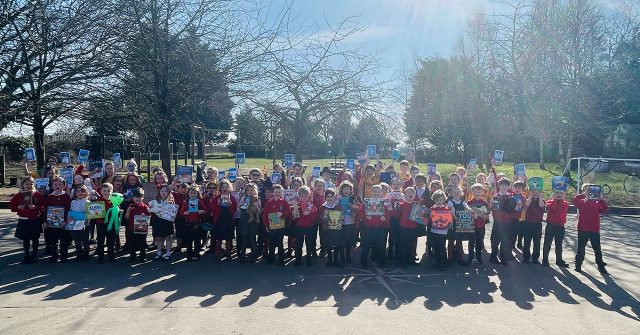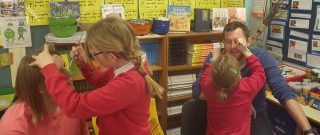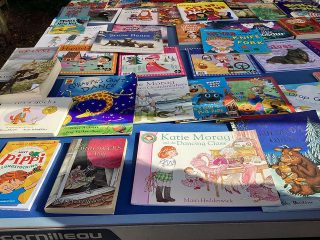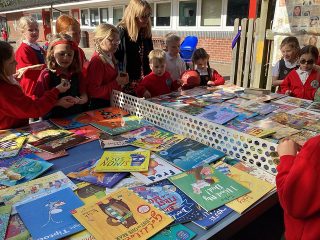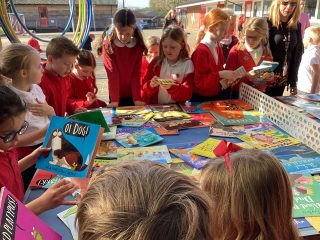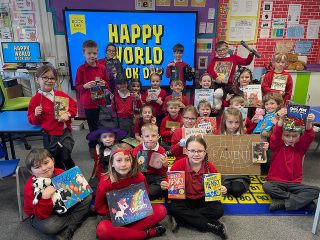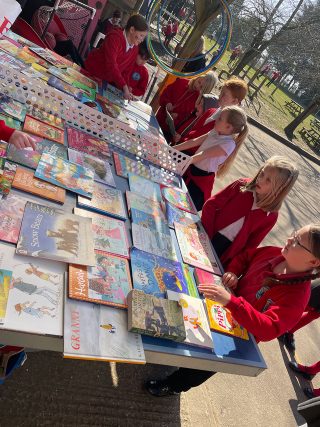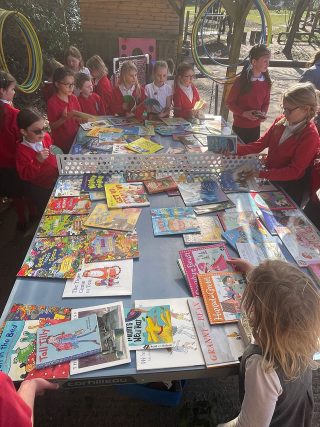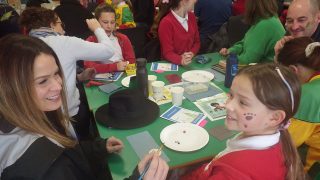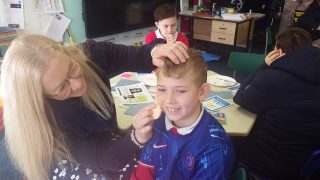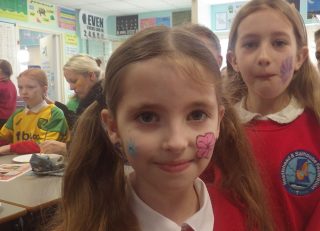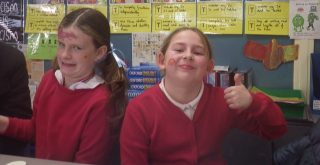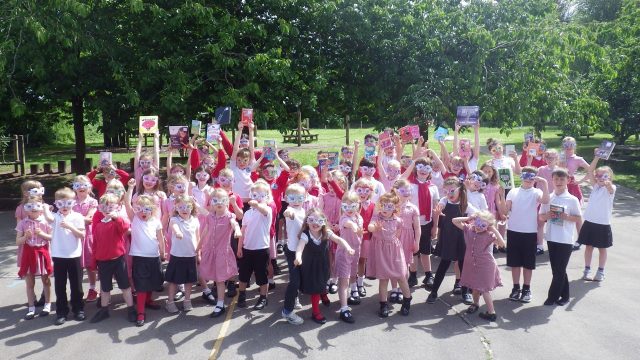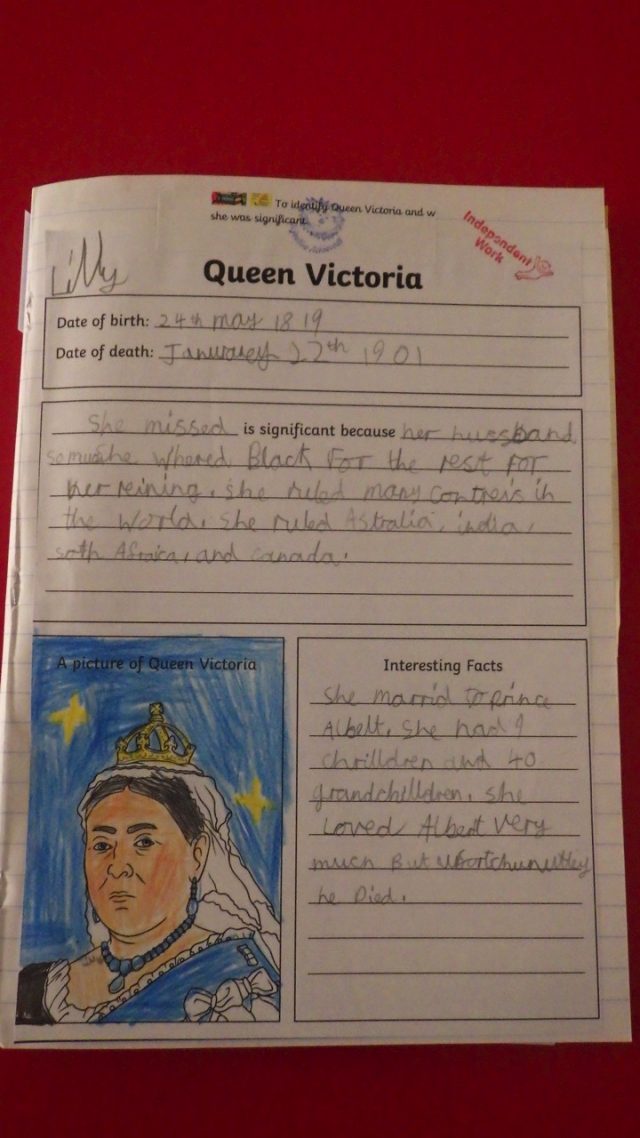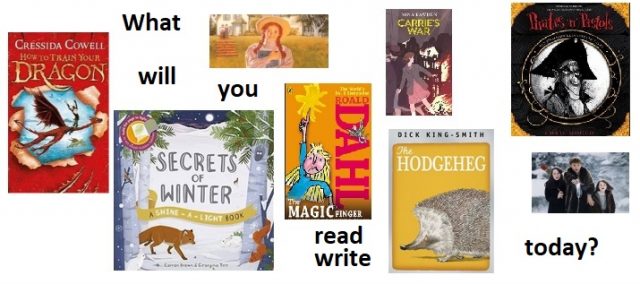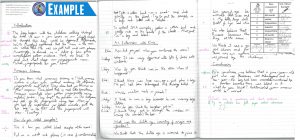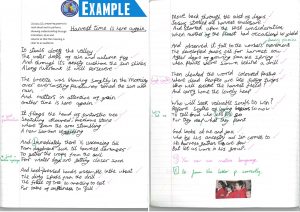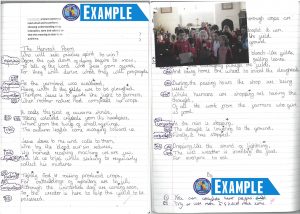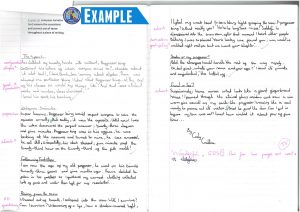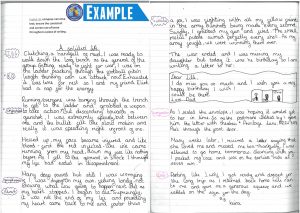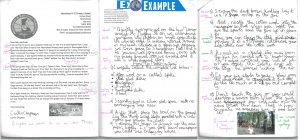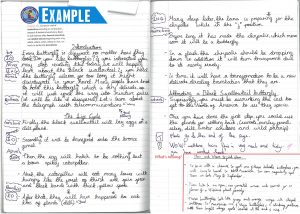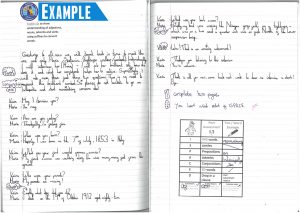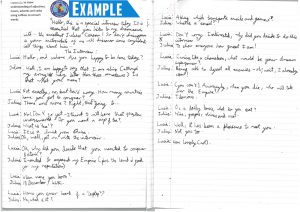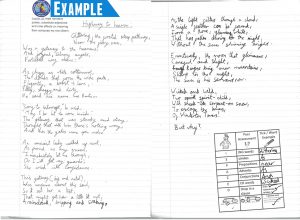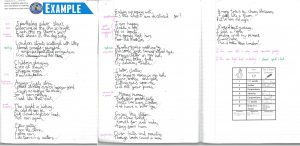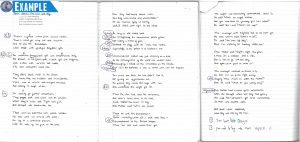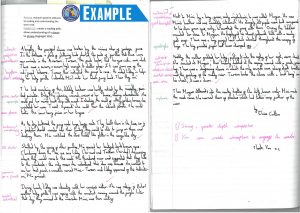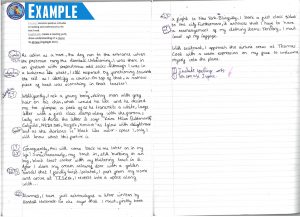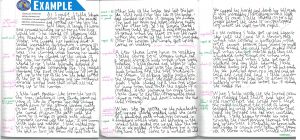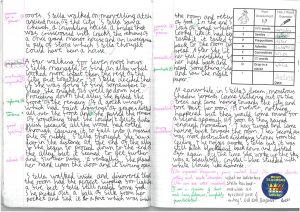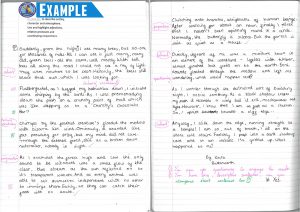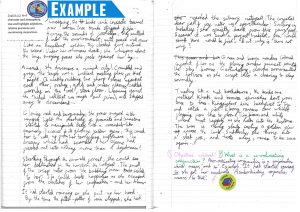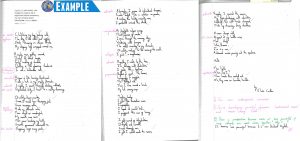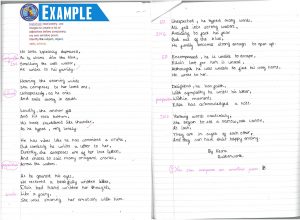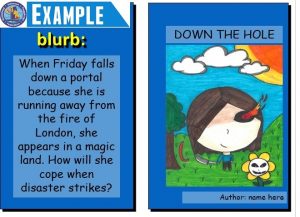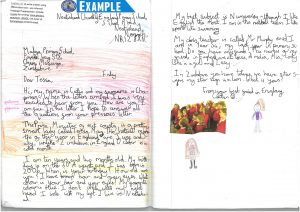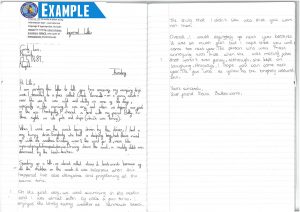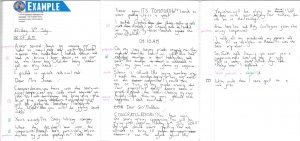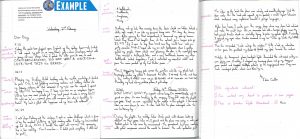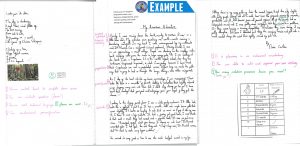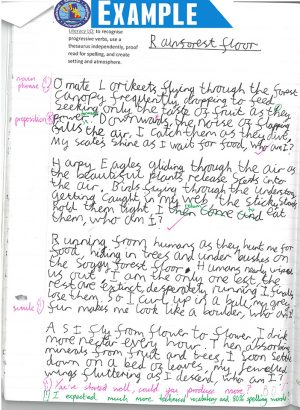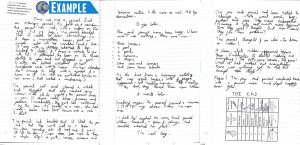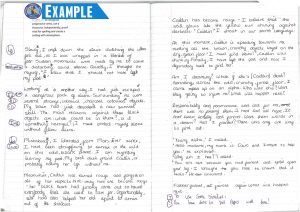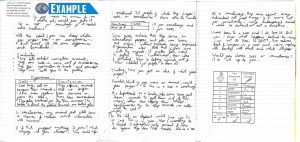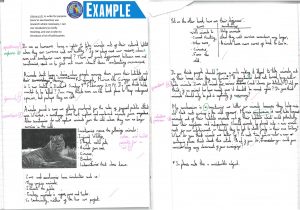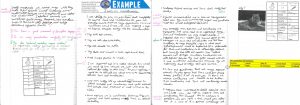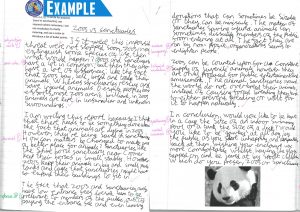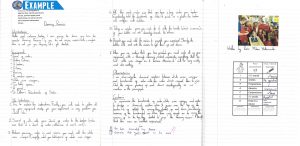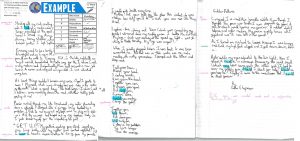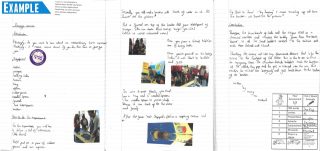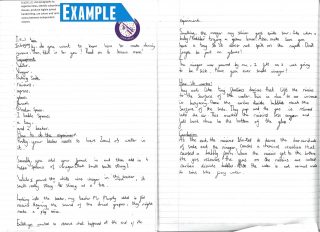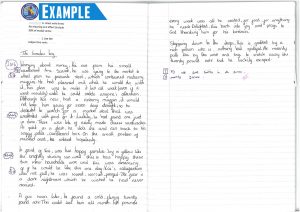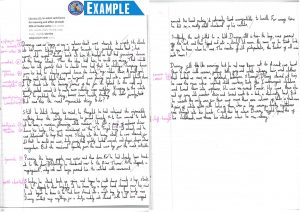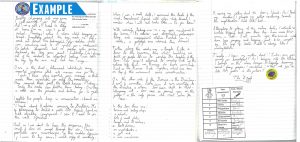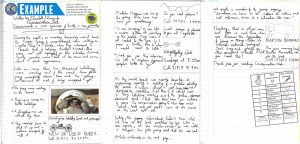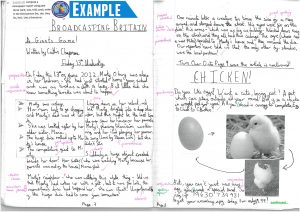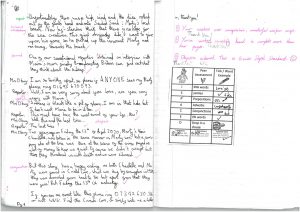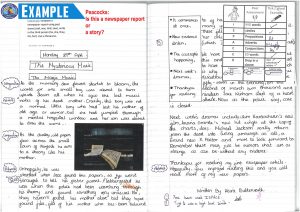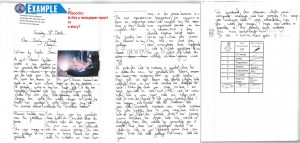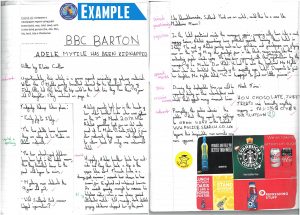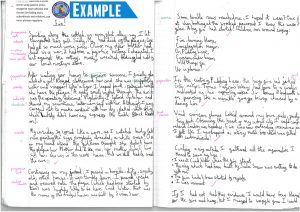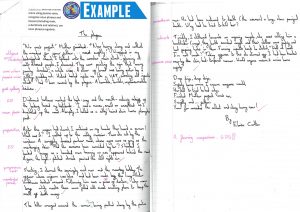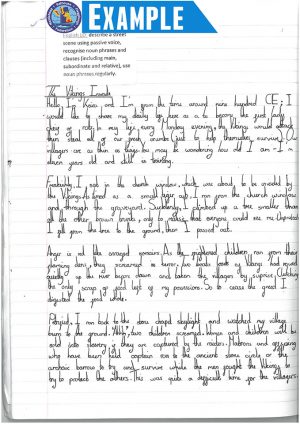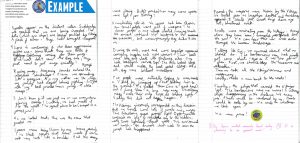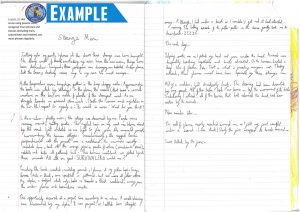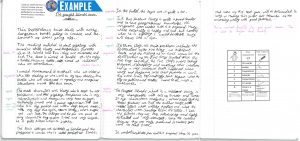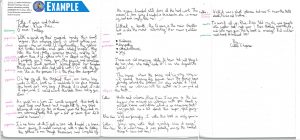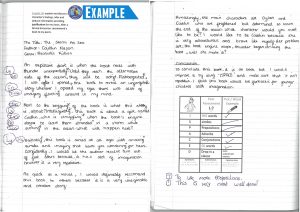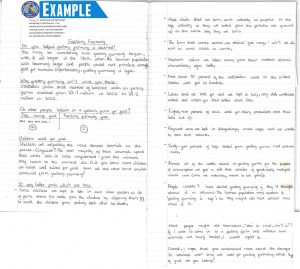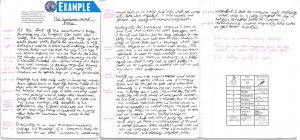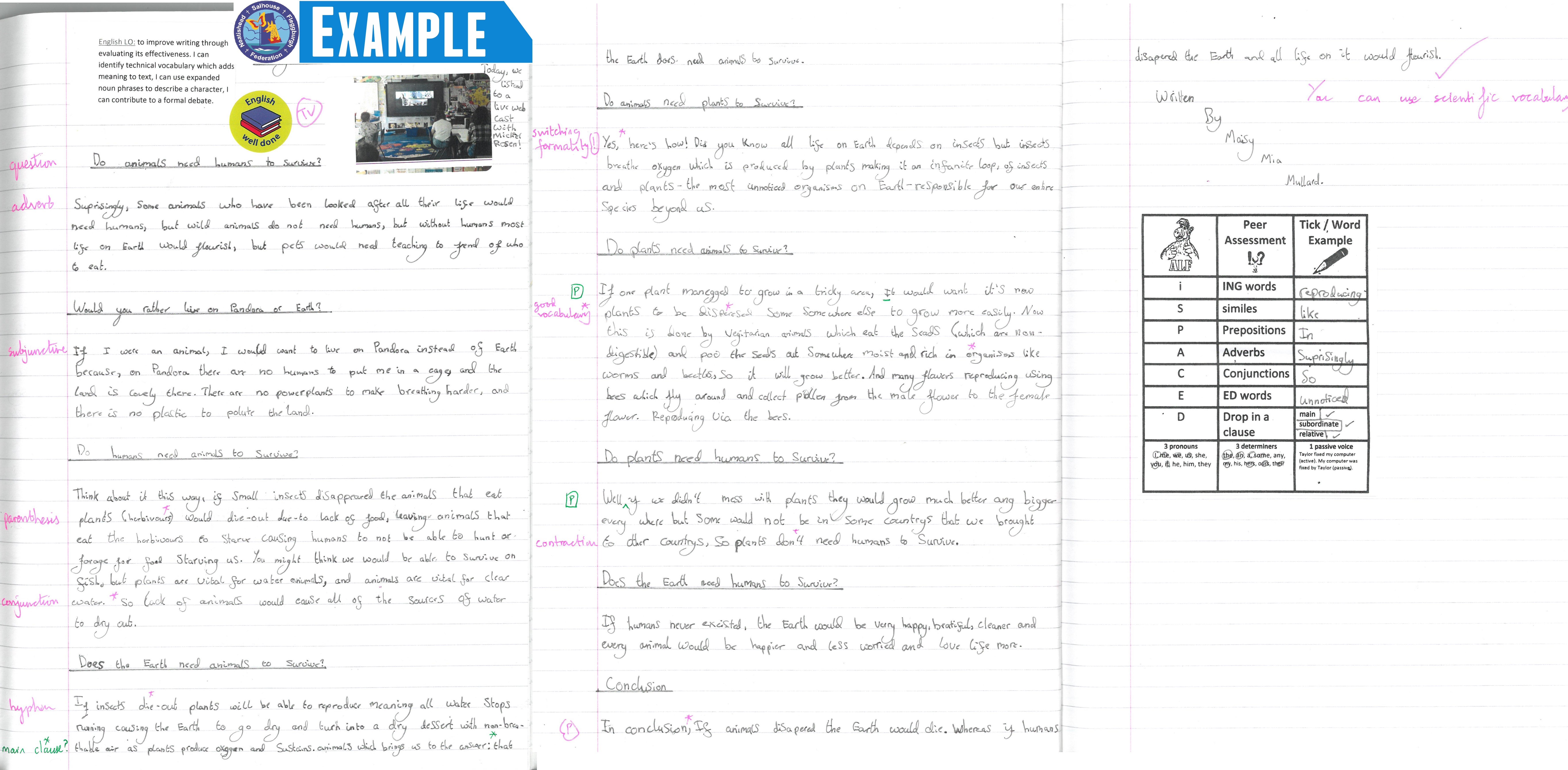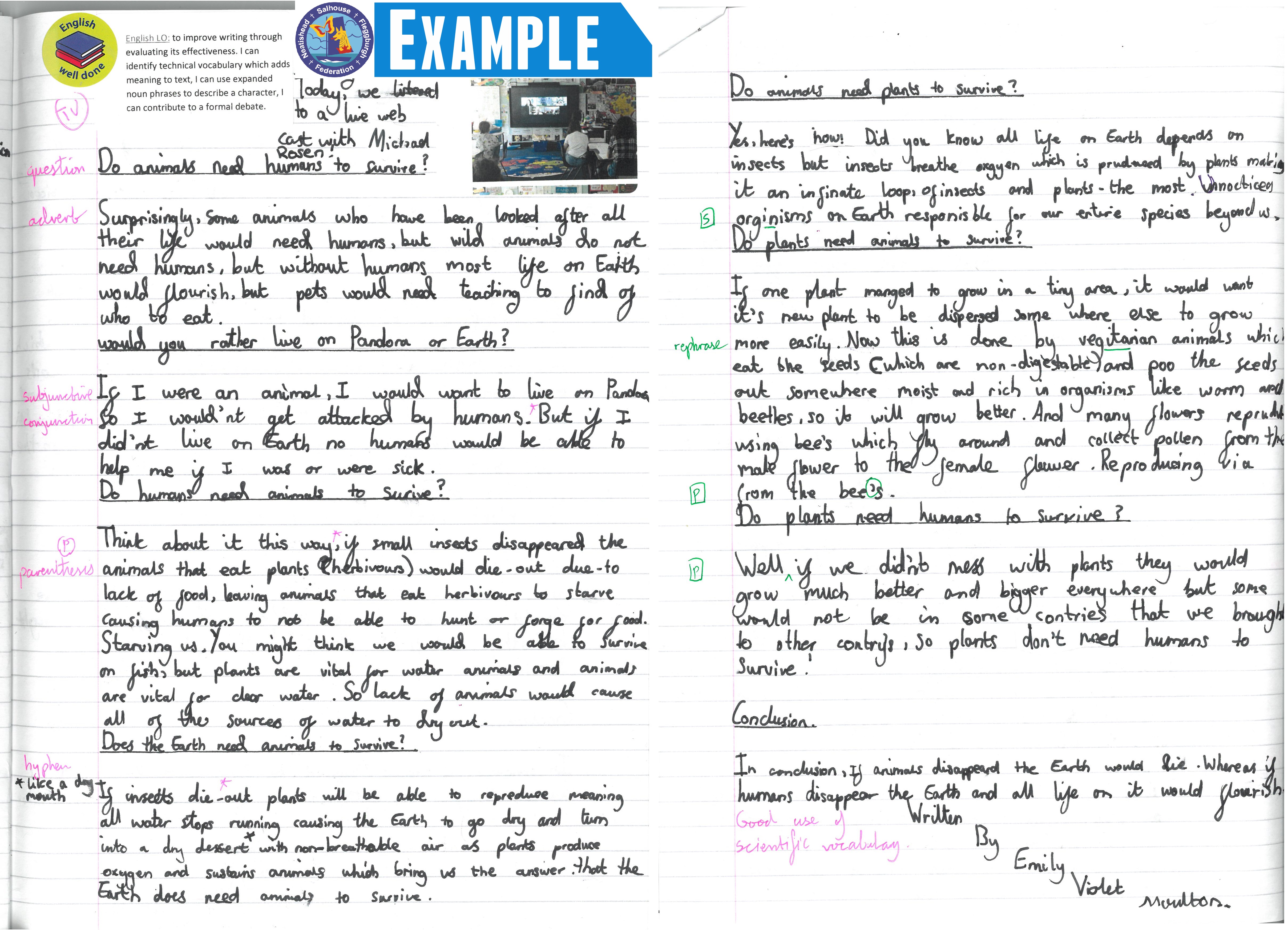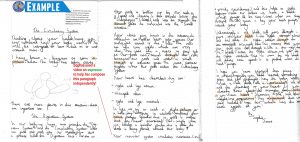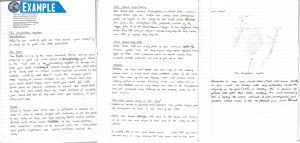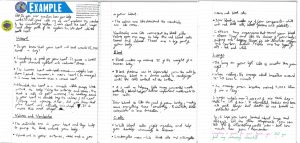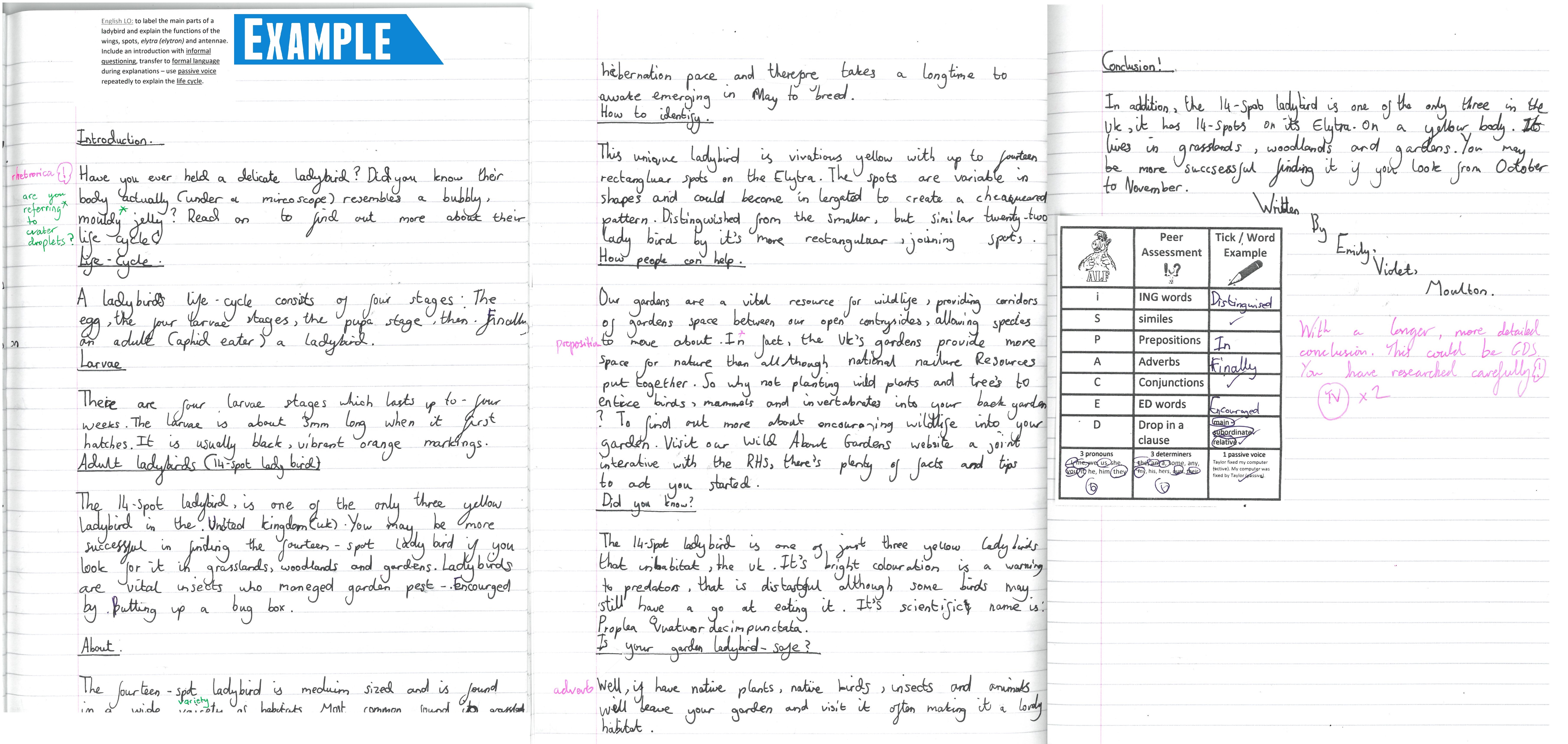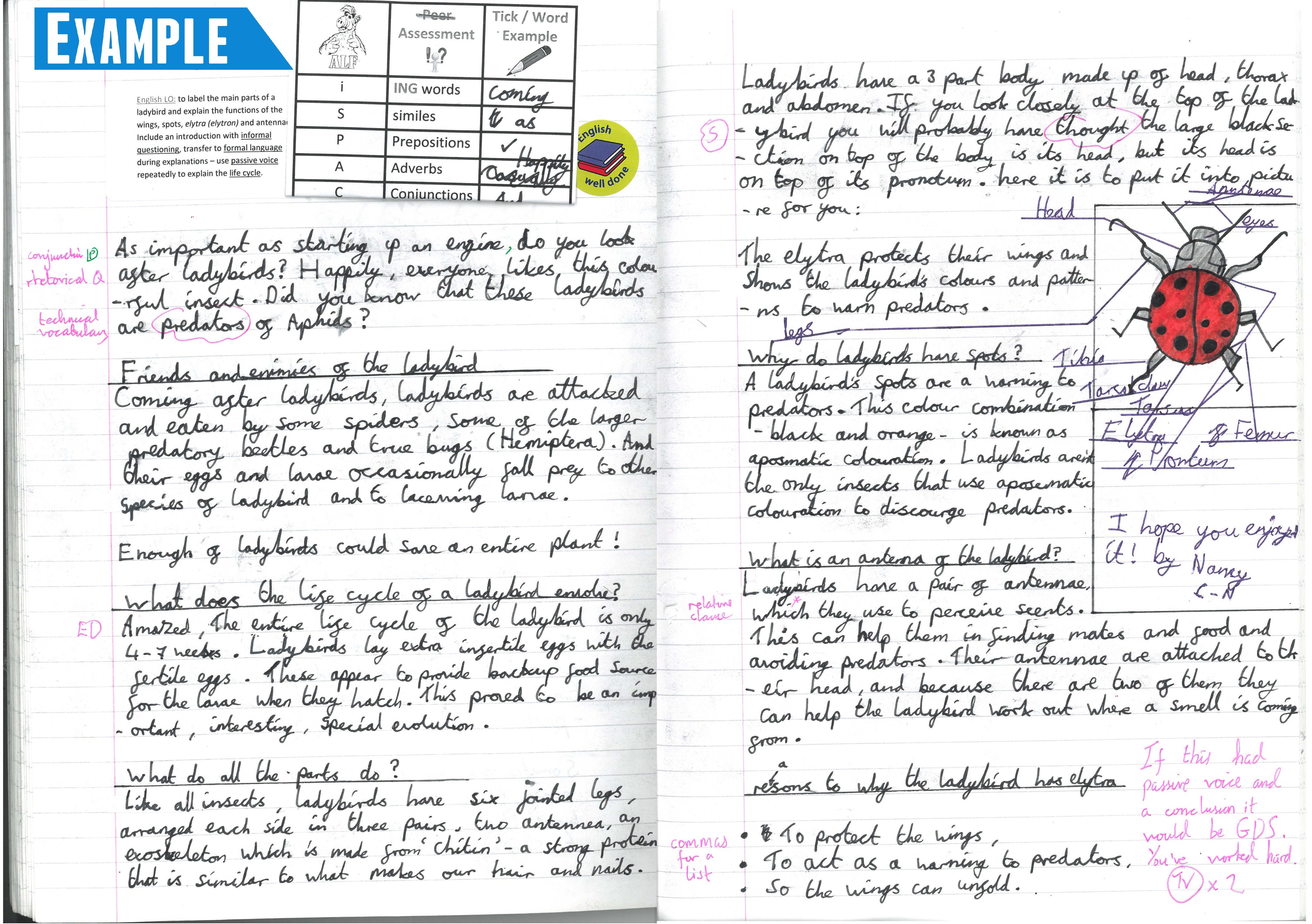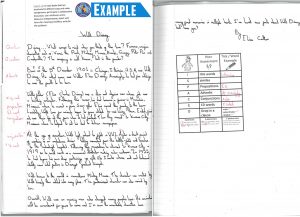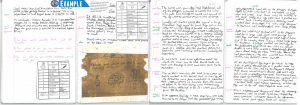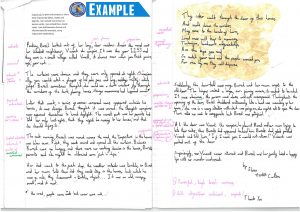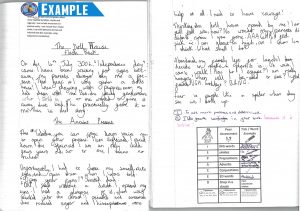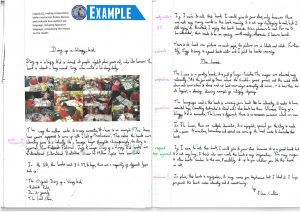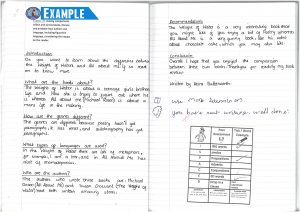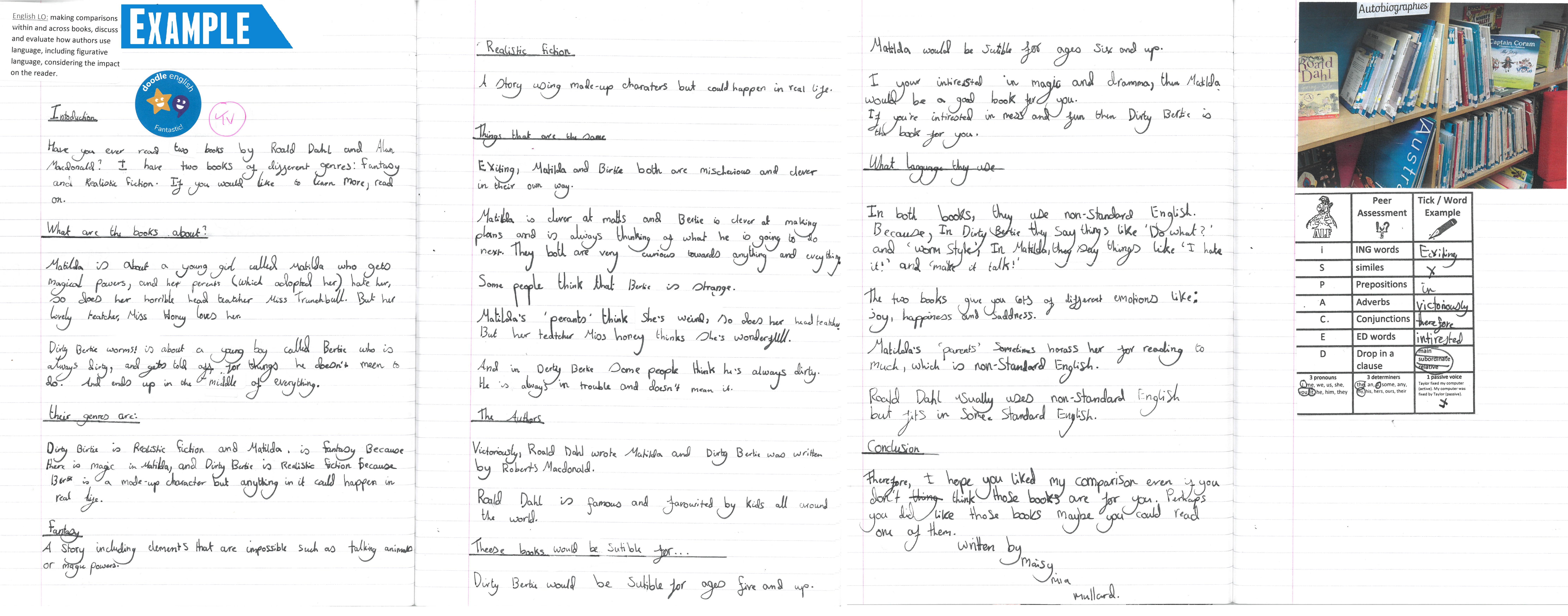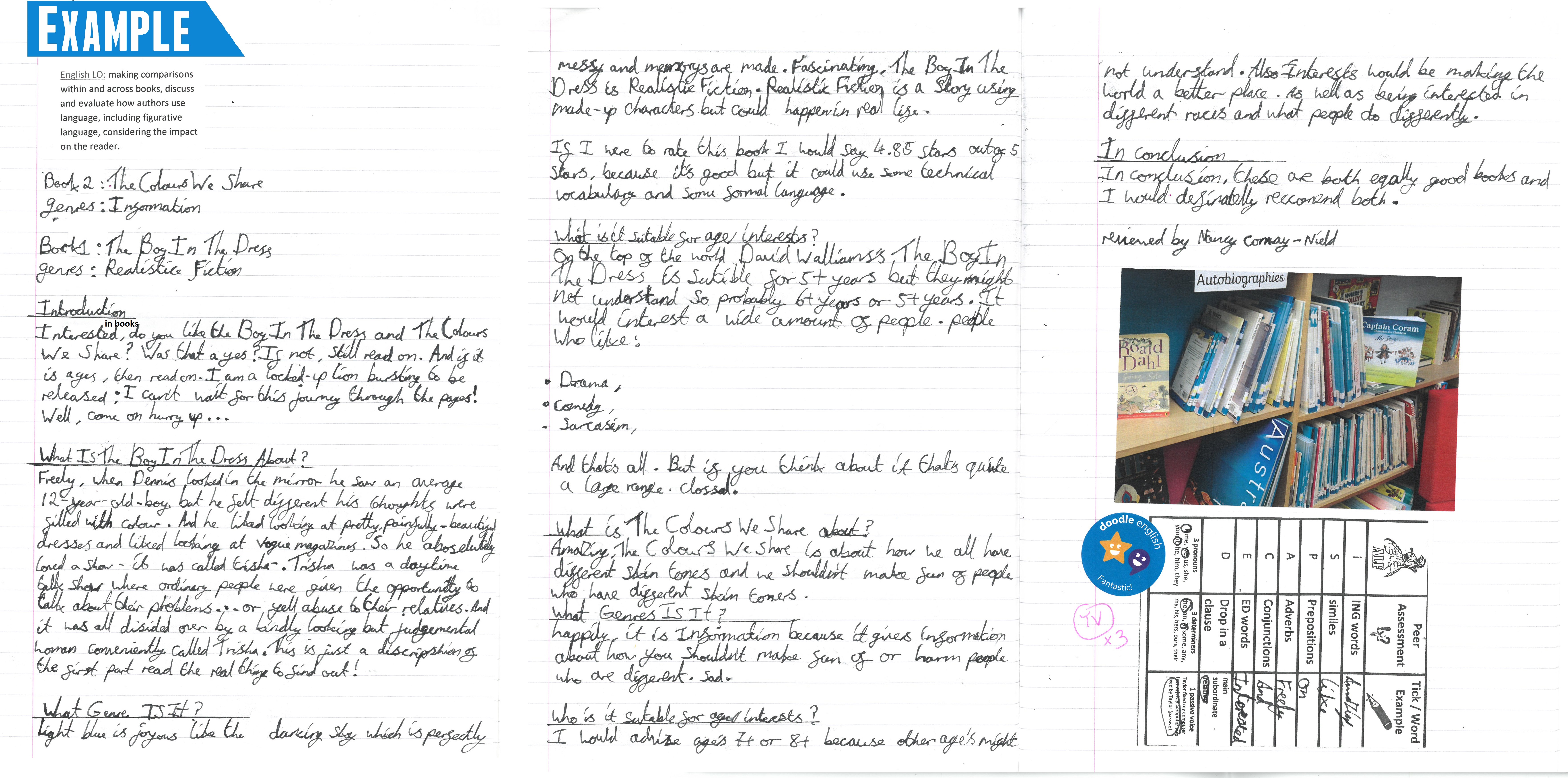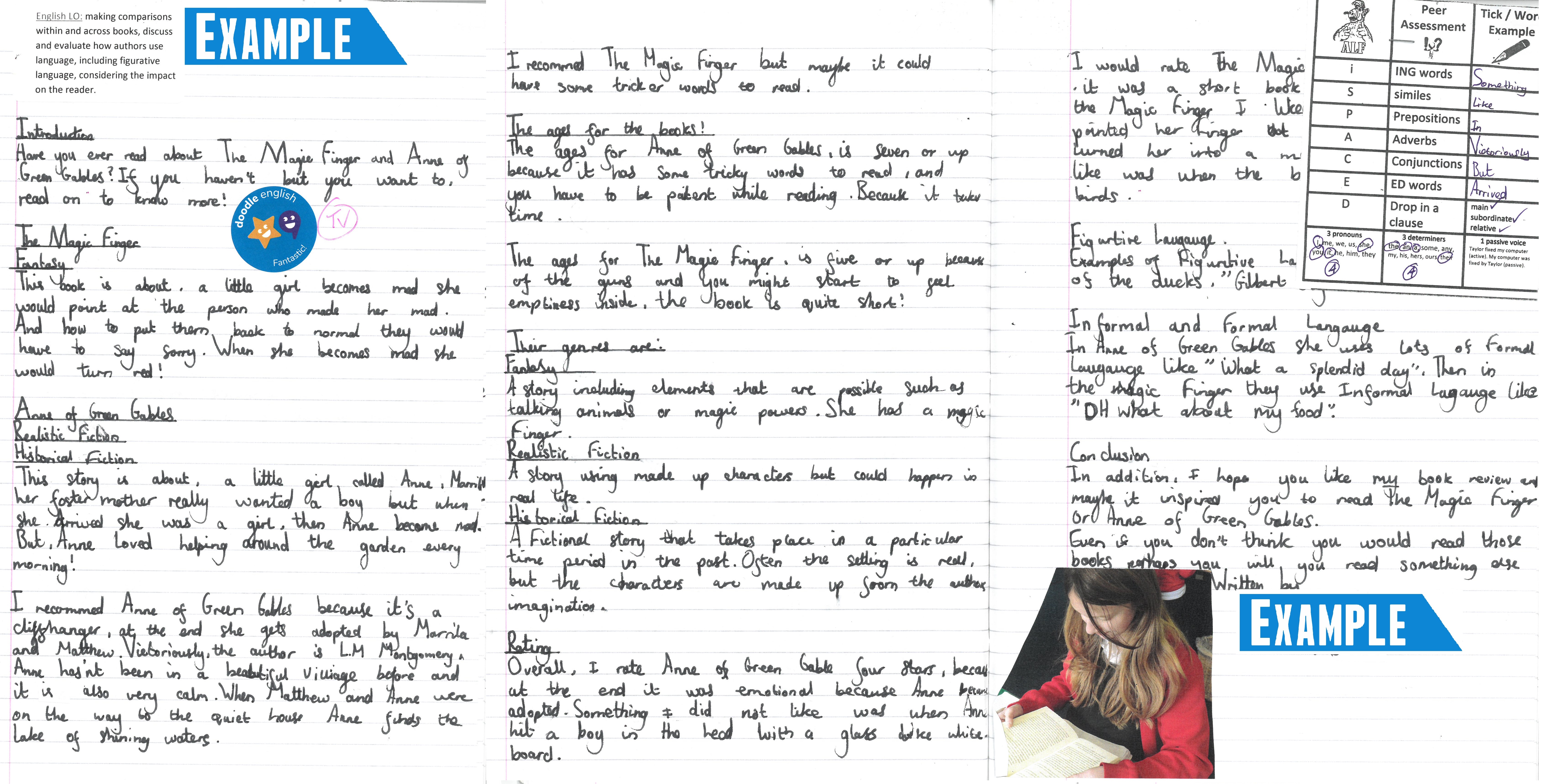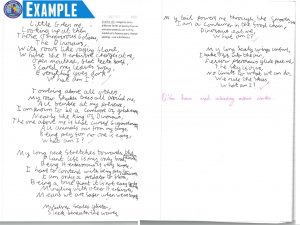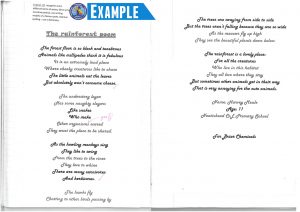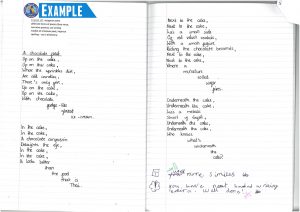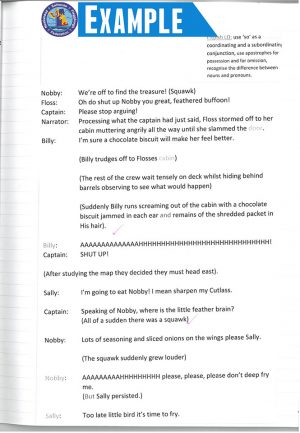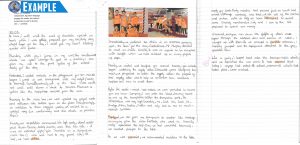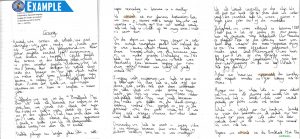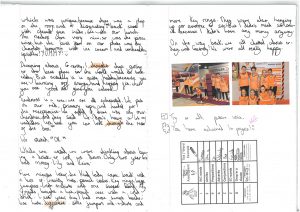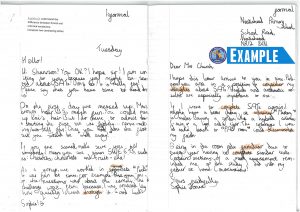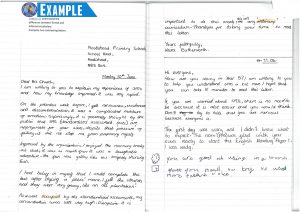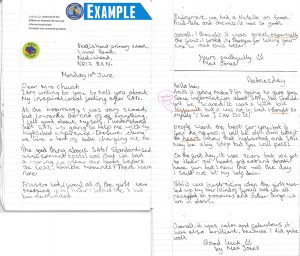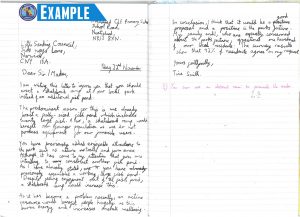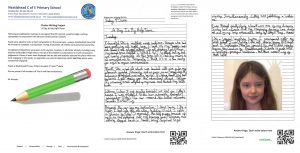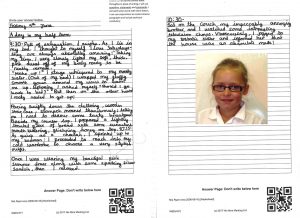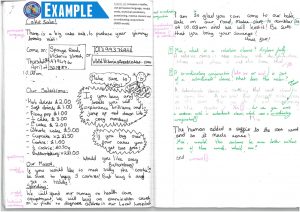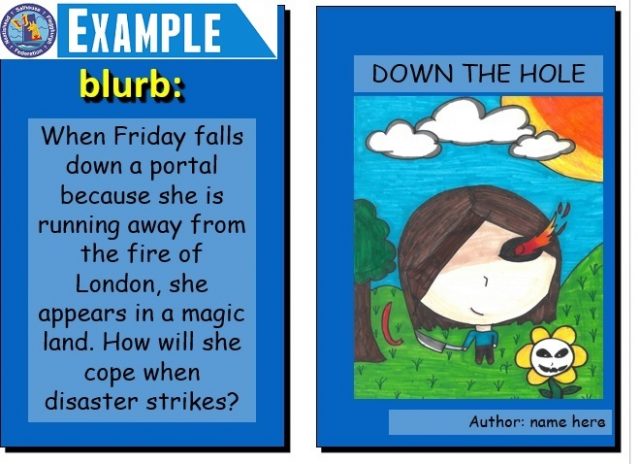We teach correct vocabulary for the different types of words:
We begin by learning to form letters within the same family, eg: c, a, o and b, d, k. As soon as letter formation is secure, during the Reception year, we teach our children how to join their letters.
Discussing Writing Projects by Year 6 Students
KS2 Progression in Writing
Inspired by Teaching Reading and Writing Links (TRAWL) we want children to see themselves as authors. Children are expected to grasp concepts quickly to identify the structure and patterns found within writing genres and themes approached each day/week. Grammar and punctuation form a large part of the learning objectives, which are taught as part of the teaching sequence. Curriculum strands, including examples, form part of an interactive classroom display, which children benefit from using whilst drafting compositions each week.
A Platform For Independent Writing
For children to compose writing independently, we follow the following teaching sequence:
Research,
Organise Ideas,
Draft,
Edit,
Compose.
All writing projects begin at home one week before the theme and learning objectives are introduced in class. We issue words to be learnt at home, the spelling and comprehension of the words are a valued part of the children's research. During lessons, these words are used within pupils' writing, alongside key vocabulary.
Key Vocabulary
During the early research, drafting and editing, pupils are encouraged to use:
80% of their weekly spelling words,
Technical vocabulary,
Higher level vocabulary,
Year 3/4 spelling lists,
Year 5/6 spelling lists,
Adapt existing vocabulary with prefixes and suffixes.
Fluency and Presentation
Development begins with reading - all children are part of weekly reading interventions. School sets daily reading challenges and rewards children for reading at home. All children are expected to produce, on average, two full pages of text each week. All children own a 'writing portfolio' of finished compositions. These portfolios are reviewed by the authors and their peers. Cross-curricular themes form a large part of children’s written pieces.
Challenging All Pupils
As children enter LKS2, they have opportunities to access all areas of the Key Stage 2 curriculum, this includes challenging objectives which form expectations for pupils in Year 6. Technical vocabulary is embraced, and children are rewarded for using Standard English, alongside technical vocabulary as they provide reasoning. All children receive challenging individual targets, which form the basis for their intervention. Similarly, all children receive intervention. There is a high expectation that all children revise reading comprehension and fluency regularly. Staff aim to provide numerous opportunities for children to read 1:1 with an adult, including the completion of the teaching programme ‘Yes We Can Read’ – this provides children with an opportunity to revise phonics sounds, and blending sounds before building words and sentences. Children bring this knowledge to lessons and are challenged further to provide sentences which form cohesive paragraphs (inserting spelling words children have learnt at home). Following advice from external school advisors, children are encouraged to touch type during a five-week long story writing project. Whilst listening to audio books and creating reading paths children are inspired by the books they have read. Preparing for life in Year 6, where laptop spelling tools are turned off, children learn to peer-assess and self-assess as they draft compositions.
Story Writing Projects - TRAWL - making a book
A five week story writing project is introduced to the class annually while a newly introduced LKS2 novel and UKS2 novel are read with the class. An audio book is used alongside a film (these are compared in turn to form a debate around imagery). Reading Paths are created by each child between the completion of chapters, these are used to inspire pupils' own books. Outcomes are celebrated and shared in the library.
Inspirational Text
Each story writing project is preceded by reading and analysis of one LKS2 novel and one UKS2 novel, our current reading list is:
- The Magic Finger – Roald Dahl,
- The Lion, The Witch and The Wardrobe – CS Lewis,
- Hodgeheg – Dick King-Smith,
- Carrie’s War – Nina Bawden,
- Shine A Light, The Secrets of Winter – Carron Brown,
- Anne of Green Gables – LM Montgomery,
- Pirates n’ Pistols – Chris Mould,
- How To Train Your Dragon – Cressida Cowell.
Assessment
Teacher assessment,
Peer assessment,
Self-assessment (including wall targets).
Examples of Writing Outcomes
View my book

All children in Year One take part in the National Phonics Screening Test. This takes place in June. This letter aims to explain this process, in addition to providing you with ideas to help your child with phonics at home.
What is phonics?
Phonics is a way of teaching children to read. They are taught how to:
- Recognise the sounds that each individual letter makes
- Identify the sounds that different combinations of letters make e.g. sh and oo
- Blend these sounds together from left to right to make a word.
Children can then use this knowledge to segment and blend new words that they hear or see.
The screening test comprises of a list of 40 words that children read one-to-one with a teacher. The list is a combination of both real and made up, non-words which rely purely on using phonics to decode. Children cannot read the non-words by using their memory or vocabulary; they have to use their decoding skills.
Helping your child with phonics
I have included lots of games and ideas for you to enjoy at home. Regular reading and phonics practice will help your child to continue to develop their reading skills and make reading an exciting and engaging part of their lives.
If you have any questions, please do come and talk to me.
Thank you,
Laura Davies



